Tiếng anh giao tiếp online
The Art of deception IELTS Reading: Giải đề thi thật [Full Answers]
Mục lục [Ẩn]
Khi ôn tập IELTS Reading, việc luyện kĩ năng giải đề qua các đề thi thật là một cách hiệu quả giúp bạn tăng band điểm nhanh. Bài viết này sẽ giúp bạn giải trọn vẹn đề thi thật IELTS Reading “The art of deception” với đầy đủ đề bài, câu hỏi, đáp án chi tiết kèm giải thích rõ ràng. Đây sẽ là tài liệu hữu ích để bạn ôn luyện và nâng cao kỹ năng Reading, sẵn sàng chinh phục band điểm mục tiêu trong kỳ thi IELTS.
1. Đề thi The Art of deception IELTS Reading
The art of deception
Do tiny changes of facial expression show whether someone is telling lies?
Forty years ago, the research psychologist Dr. Paul Ekman was addressing a group of young psychiatrists in training when he was asked a question, the answer to which has kept him busy ever since. Suppose the group wanted to know: a particular patient swears they are telling the truth. They look and sound sincere. So here is the question: is there any way you can be sure they are telling the truth? Ekman did not know the answer then but wanted to find out.
As part of his research, he had already filmed a series of 12-minute interviews with psychiatric patients. In a subsequent conversation, one of the patients said that he had lied to him. So, Ekman sat and looked at the film but saw nothing noteworthy. Then he slowed it down and looked again. Then he slowed it even further. And suddenly, there, across just two frames of the film, he saw it: an intense expression of extreme anguish. It lasted less than a 15th of a second, but once he had spotted the first expression, he soon found three more examples in that same interview. He termed his discovery "micro-expression": very rapid intense demonstrations of emotion that the subject intended to be concealed.
Over the course of the next four decades, Ekman successfully demonstrated a proposition first suggested by Charles Darwin: that the ways in which we express disgust, contempt, fear, surprise, happiness, and sadness are universal. The facial muscles triggered by those seven basic emotions are, he has shown, essentially standard, regardless of language and culture, from the US to Japan and Brazil to Papua New Guinea. What is more, expressions of emotion are impossible to suppress and, particularly when we are lying, micro-expressions of powerfully felt emotions will inevitably flit across our face before we get the chance to stop them.
Fortunately for liars, most people will fail to spot these fleeting signals of inner torment. Of the 15,000 Ekman has tested, only 50 people, whom he calls "naturals," have been able to do it. But given a little more training, Ekman says, almost anyone can develop the skill. He should know, since these tests were completed in the mid-1980s and the first publication of his research, he has been called in by the FBI and CIA (among countless more law enforcement and other agencies around the world), not just to solve cases, but to teach them how to use his techniques for themselves. He has held workshops for defense and prosecution lawyers, health professionals, even jealous spouses, all of them wanting to know exactly when someone is not being 100 per cent candid.
Most recently, Ekman's research has featured in a new television series about the exploits of the fictional Dr. Cal Lightman, a scientist who studies involuntary body language to discover not only if you are lying but why you might have been motivated to do so. According to the publicity blurb, Lightman is a human lie detector, even more accurate than a polygraph test. Ekman concedes he was skeptical when the producer first approached him with the idea of turning his life’s work into a TV series, and initially would have stopped the project if he could. In particular, he was fearful that the show would exaggerate the effectiveness of his techniques and create the quite inaccurate impression among audiences that criminals could no longer hope to get away with lying. In the worst-case scenario, he was concerned about unfair convictions, that one day someone not properly trained in his techniques might be sitting on a jury and wrongly find someone guilty of a crime simply on the basis of a television programme.
In the end, though, he was won over because the series is unusual in several respects. It is the first time, as far as Ekman is aware, that a commercial TV drama has been based on the work of just one scientist. That scientist is also deeply involved in the project, talking through plot ideas and checking five successive drafts of each script to ensure details are correct. He was also impressed with the producer’s manifestly serious and well-intentioned reasons for making the programme. Now that the first series has been completed, he believes probably 80-90 per cent of the show is based on fact and that’s good enough for what it is. After all, a drama, not a documentary.
Ekman, incidentally, professes to have been a terrible liar ever since he was a small boy and observes that the ability to detect a lie and the ability to lie successfully are completely unrelated. He has been asked by people running for high office if he could teach them to become more credible with the public but has always refused to use his skills in that way on ethical grounds. He also insists that there are various kinds of lies. A "true" lie can be identified by having two essential characteristics: there must be a deliberate intent to mislead and there must be no notification that this is what is occurring. This means that an actor or a poker player isn’t a true liar. They are supposed to deceive you, it’s part of the game, and the same is true of flattery. He prefers to focus on the kinds of lies where the liar would be on grave trouble if they were found out and where the target would feel properly aggrieved if they knew.
Questions 27-31
Choose the correct letter, A, B, C, or D. Write the correct letter in boxes 27-31 on your answer sheet.
27 According to the writer, Ekman became interested in lying after a question from
Check answers
- peers
- patients
- students
- teachers
28 The writer refers to the 12-minute interviews in order to...
Check answers
A illustrate how frequently patients lie
B describe the origins of Ekman’s theories
C compare Ekman’s research to previous studies
D show how patients’ behaviour is affected by filming
29 What is the writer’s point in the third paragraph
Check answers
A micro-expressions are common to all people
B recent research has refuted an old idea
C with practice we can learn to control our micro-expressions
D human society is too complex to allow for generalisations
30 What are we told about Ekman’s conclusions from his tests?
Check answers
A It’s natural for people to lie
B Few untrained people can detect lies
C most liars suffer from periods of depression
D all of his subjects were trained to identify micro-expressions
31 At what point does the writer make about Ekman’s techniques in the fourth paragraph?
Check answers
A They take decades to teach
B they have been in great demand
C They have aroused the suspicions of some agencies
D they can be used by a limited range of occupations
Questions 32–36
Write the correct letter, A–H, in boxes 32–36 on your answer sheet.

Question 37–40
Do the following statements agree with the claims of the writer in Reading Passage 3?
In boxes 37–40 on your answer sheet, write
TRUE if the statement is true
FALSE if the statement is false
NOT GIVEN if the information is not given in the passage
37 Ekman regrets the lies he told as a child
38 People who are good at lying tend to be good at detecting lies
39 Ekman has worked with poker players to help them lie more convincingly
40 Ekman is more interested in the types of lies with serious consequences
>> Xem thêm:
2. Giải đề thi The Art of deception IELTS Reading

2.1. Questions 27-31
Choose the correct letter, A, B, C, or D. Write the correct letter in boxes 27-31 on your answer sheet.
27.According to the writer, Ekman became interested in lying after a question from
Câu hỏi: Ekman bắt đầu quan tâm đến nói dối sau câu hỏi từ ai?
Thông tin đoạn 1: “Forty years ago, the research psychologist Dr. Paul Ekman was addressing a group of young psychiatrists in training when he was asked a question…”
“young psychiatrists in training” = những bác sĩ tâm thần trẻ đang được đào tạo tức là những người cùng ngành (peers)
=> Đáp án: A: peers
28 The writer refers to the 12-minute interviews in order to...
Câu hỏi: Người viết nhắc tới các cuộc phỏng vấn 12 phút để làm gì?
Thông tin đoạn 2: “…he had already filmed a series of 12-minute interviews… one of the patients said that he had lied… He termed his discovery ‘micro-expression’.”
Những cuộc phỏng vấn 12 phút này chính là nguồn gốc để Ekman phát hiện vi biểu cảm → khởi đầu học thuyết của ông.
=> Đáp án: B: describe the origins of Ekman’s theories
29 What is the writer’s point in the third paragraph
Câu hỏi: Điểm chính của đoạn 3 là gì?
Thông tin đoạn 3: “…the ways in which we express disgust, contempt, fear, surprise, happiness, and sadness are universal… regardless of language and culture…”
Đoạn 3 nhấn mạnh rằng vi biểu cảm là phổ quát ở mọi người, không phụ thuộc ngôn ngữ hay văn hóa.
Đáp án: A micro-expressions are common to all people
30 What are we told about Ekman’s conclusions from his tests?
Câu hỏi: Kết luận từ các bài kiểm tra của Ekman là gì?
Thông tin đoạn 4: “Of the 15,000 Ekman has tested, only 50 people, whom he calls ‘naturals,’ have been able to do it.”
Đoạn nói rằng 15.000 được tested nhưng chỉ 50 người naturals tự nhiên làm được, còn những người còn lại cần được huấn luyện. Như vậy có thể hiểu những người kia sau đó đã được huấn luyện để nhận ra.
=> Đáp án: D: all of his subjects were trained to identify micro-expressions
31 At what point does the writer make about Ekman’s techniques in the fourth paragraph?
Câu hỏi: Điểm nào về kỹ thuật của Ekman trong đoạn 4?
Thông tin đoạn 4: “…he has been called in by the FBI and CIA… workshops for lawyers, health professionals, even jealous spouses…”
Đoạn nêu EKman được mời bởi FBI, CIA, luật sư…. tức đa dạng ngành nghề
=> Đáp án: D they can be used by a limited range of occupations
>> Xem thêm: Giải đề IELTS Reading: A brief introduction to pepper
2.2. Questions 32–36
- C False beliefs
Đoạn 5: “…he was fearful that the show would exaggerate the effectiveness of his techniques and create the quite inaccurate impression among audiences…”
=> Ekman lo khán giả sẽ có niềm tin sai lầm (false beliefs) rằng không ai có thể nói dối được nữa.
- B crimes
Đoạn 5: “…he was concerned about unfair convictions, that one day someone not properly trained in his techniques might be sitting on a jury and wrongly find someone guilty of a crime simply on the basis of a television programme.”
=> Ở đây, Ekman lo sợ có “unfair convictions” (kết án oan), tức tội phạm (crimes) có thể bị phán sai.
- H research
Đoạn 6: “…It is the first time, as far as Ekman is aware, that a commercial TV drama has been based on the work of just one scientist.”
=> Chương trình đặc biệt vì dựa hẳn vào nghiên cứu (research) của một cá nhân.
- D motives
Đoạn 6: “…He was also impressed with the producer’s manifestly serious and well-intentioned reasons for making the programme.”
=> Ông ngạc nhiên vì động cơ (motives) nghiêm túc và thiện chí của nhà sản xuất.
- F accuracy
Đoạn 6: “…he believes probably 80-90 per cent of the show is based on fact and that’s good enough for what it is. After all, a drama, not a documentary.”
=> Với thể loại phim truyền hình, ông hài lòng với mức độ chính xác (accuracy) tổng thể.
2.3. Question 37–40
37 Ekman regrets the lies he told as a child
Câu hỏi: Ekman hối tiếc những lời nói dối khi còn nhỏ.
Thông tin đoạn 7: “…professes to have been a terrible liar ever since he was a small boy…”
Bài chỉ nói ông nói dối rất tệ từ bé, không hề nói ông hối hận về những lần nói dối đó. Vì ý “hối tiếc” không xuất hiện → NOT GIVEN.
38 People who are good at lying tend to be good at detecting lies
Câu hỏi: Những người nói dối giỏi thường cũng giỏi phát hiện nói dối.
Thông tin đoạn 7: “…the ability to detect a lie and the ability to lie successfully are completely unrelated.”
Tác giả nói hai khả năng này hoàn toàn không liên quan, trái hẳn mệnh đề trong câu hỏi → FALSE.
39 Ekman has worked with poker players to help them lie more convincingly
Câu hỏi: Ekman đã làm việc với người chơi poker để giúp họ nói dối thuyết phục hơn.
Thông tin đoạn 7: “…an actor or a poker player isn’t a true liar. They are supposed to deceive you, it’s part of the game…” và “He has been asked by people running for high office… [he] has always refused to use his skills in that way on ethical grounds.”
Bài chỉ nêu quan điểm về poker (không phải “true liar”) và nêu việc ông từ chối giúp chính trị gia trở nên đáng tin hơn. Không có câu nào nói ông đã làm việc với người chơi poker để dạy họ nói dối → thông tin không được nêu → NOT GIVEN.
40 Ekman is more interested in the types of lies with serious consequences
Câu hỏi: Ekman quan tâm hơn đến những kiểu nói dối có hậu quả nghiêm trọng.
Thông tin đoạn 7: “He prefers to focus on the kinds of lies where the liar would be in grave trouble if they were found out and where the target would feel properly aggrieved if they knew.”
Ông ưu tiên các lời nói dối mà nếu bị lộ sẽ gây rắc rối nặng cho người nói dối và gây tổn hại thật sự cho người bị lừa → đúng ý câu hỏi → TRUE.
>> Xem thêm:
3. Từ vựng quan trọng trong bài The Art of deception IELTS Reading
Khi chuẩn bị cho kỳ thi IELTS Reading, việc phát triển vốn từ vựng theo kế hoạch học tập rõ ràng chính là chìa khóa để nâng cao band điểm. Một trong những cách hiệu quả nhất là giải đề IELTS Reading thường xuyên, kết hợp với luyện tập từ vựng trong các bài đọc học thuật. Cách học này giúp thí sinh ghi nhớ từ mới nhanh hơn, đồng thời vận dụng chính xác trong nhiều ngữ cảnh khác nhau. Dưới đây là tổng hợp từ vựng quan trong trong bài đọc “The art of deception” giúp bạn tăng tốc độ đọc hiểu, cải thiện kỹ năng phân tích và từng bước nâng cao kết quả khi làm bài thi thật.
- deception (n) sự lừa dối
- to deceive (v) lừa dối
- sincere (adj) chân thành
- research psychologist (n) nhà tâm lý học nghiên cứu
- psychiatrist (in training) (n) bác sĩ tâm thần (đang đào tạo)
- subsequent (adj) tiếp theo, sau đó
- frame (n) khung hình (phim)
- anguish (n) nỗi đau dữ dội
- micro-expression (n) vi biểu cảm (thoáng, rất nhanh)
- to conceal (v) che giấu
- universal (adj) phổ quát
- fleeting (adj) thoáng qua, ngắn ngủi
- to suppress (v) kìm nén
- natural(s) (n) người bẩm sinh có khả năng
- law enforcement (n) cơ quan thực thi pháp luật
- workshop (n) hội thảo/ khóa huấn luyện
- jealous spouse (n) vợ/chồng ghen tuông
- involuntary body language (n) ngôn ngữ cơ thể không chủ ý
- to exaggerate (v) phóng đại
Khi thực hành với đề IELTS Reading “The art of deception”, học viên thường gặp thách thức trong việc phân tích dạng bài và vận dụng từ vựng học thuật một cách hiệu quả. Để tối ưu kết quả, việc xây dựng lộ trình ôn tập khoa học kết hợp cùng sự hướng dẫn từ giáo viên giàu kinh nghiệm sẽ mang lại lợi ích rõ rệt. Nhờ đó, bạn không chỉ nâng cao tốc độ làm bài mà còn gia tăng cơ hội đạt band điểm cao trong phần Reading của kỳ thi IELTS.
Để đáp ứng nhu cầu, Langmaster xây dựng các khóa học IELTS online với lộ trình cá nhân hóa. Học viên sẽ được giảng viên theo sát, chỉ ra lỗi sai ngay lập tức trong vòng 24 giờ và hướng dẫn phương pháp học tập tối ưu để tiến bộ nhanh chóng hơn.
Tại Langmaster học viên được:
- Coaching 1 - 1 với chuyên gia: Học viên được kèm riêng để khắc phục điểm yếu, phân bổ thời gian thi chi tiết, tập trung rèn kỹ năng chưa vững và rút ngắn lộ trình nâng band.
- Sĩ số lớp nhỏ, 7 - 10 học viên: Lớp học chỉ từ 7–10 học viên, tạo điều kiện để mọi người đều có cơ hội thảo luận, thực hành và nhận phản hồi trực tiếp từ giảng viên. Với sĩ số hợp lý, thầy cô dễ dàng theo sát từng học viên, kịp thời điều chỉnh phương pháp học tập để đạt hiệu quả tối ưu.
- Lộ trình học cá nhân hóa: Thiết kế dựa trên trình độ đầu vào và mục tiêu điểm số, kèm báo cáo tiến bộ hàng tháng.
- Giáo viên 7.5+ IELTS: Giảng viên tại Langmaster được tuyển chọn nghiêm ngặt: sở hữu chứng chỉ IELTS tối thiểu 7.5, không kỹ năng nào dưới 6.5, đồng thời có nhiều năm kinh nghiệm giảng dạy thực tiễn. Giáo viên không chỉ giỏi chuyên môn mà còn luôn đồng hành cùng học viên, hỗ trợ và chỉnh sửa bài tập/bài viết trong vòng 24 giờ, đảm bảo tiến bộ nhanh chóng và đúng trọng tâm.
- Thi thử định kỳ: Mô phỏng áp lực thi thật, phân tích điểm mạnh - yếu để điều chỉnh chiến lược học.
- Cam kết đầu ra, học lại miễn phí: Đảm bảo kết quả, giảm thiểu rủi ro “học xong vẫn chưa đạt mục tiêu”.
- Học online tiện lợi, chất lượng như offline: Có bản ghi để xem lại, linh hoạt, tiết kiệm thời gian, chi phí.
- Hệ sinh thái học tập toàn diện: Tài liệu chuẩn, bài tập online, cộng đồng học viên và cố vấn luôn đồng hành.
Đăng ký học thử IELTS Online miễn phí ngay hôm nay để trải nghiệm lớp học thực tế, kiểm tra trình độ và nhận lộ trình học tập hiệu quả, giúp bạn thành thạo kỹ năng IELTS Writing và chinh phục mục tiêu IELTS!
Khi ôn luyện đề IELTS Reading “The art of deception”, học viên không chỉ nắm vững đáp án đúng mà còn phát triển khả năng phân tích theo từng dạng câu hỏi một cách logic. Việc kết hợp từ vựng học thuật trong ngữ cảnh thực tế giúp ghi nhớ hiệu quả, đồng thời mở rộng vốn từ cần thiết cho kỹ năng đọc học thuật. Đây là nền tảng quan trọng giúp thí sinh nâng cao kỹ năng đọc hiểu, từng bước đạt mục tiêu band điểm cao trong phần IELTS Reading, tạo lợi thế vững chắc trong toàn bộ kỳ thi.
Nội Dung Hot
KHÓA TIẾNG ANH GIAO TIẾP 1 KÈM 1
- Học và trao đổi trực tiếp 1 thầy 1 trò.
- Giao tiếp liên tục, sửa lỗi kịp thời, bù đắp lỗ hổng ngay lập tức.
- Lộ trình học được thiết kế riêng cho từng học viên.
- Dựa trên mục tiêu, đặc thù từng ngành việc của học viên.
- Học mọi lúc mọi nơi, thời gian linh hoạt.

KHÓA TIẾNG ANH GIAO TIẾP ONLINE
- Học theo nhóm (8-10 người), môi trường học tương tác và giao tiếp liên tục.
- Giáo viên đạt tối thiểu 7.0 IELTS/900 TOEIC.
- Học online chất lượng như offline.
- Chi phí tương đối, chất lượng tuyệt đối.
- Kiểm tra đầu vào, đầu ra và tư vấn lộ trình miễn phí

KHÓA TIẾNG ANH TRẺ EM
- Giáo trình Cambridge kết hợp với Sách giáo khoa của Bộ GD&ĐT hiện hành
- 100% giáo viên đạt chứng chỉ quốc tế IELTS 7.0+/TOEIC 900+
- X3 hiệu quả với các Phương pháp giảng dạy hiện đại
- Lộ trình học cá nhân hóa, con được quan tâm sát sao và phát triển toàn diện 4 kỹ năng
Bài viết khác

Nâng cao trình độ tiếng Anh của bạn với bộ tài liệu miễn phí từ Langmaster! Đăng ký ngay để bắt đầu hành trình chinh phục tiếng Anh!

Kỳ nghỉ hè 2024 sắp kết thúc, thời gian trở lại trường học của các mầm non đất nước ngày càng gần. Vậy lịch đi học lại sau hè 2024 của 63 tỉnh thành là khi nào?

Bạn muốn hiểu rõ hơn về cấu trúc bài thi Cambridge. Hãy đăng ký "Thi Thử Tiếng Anh Cambridge Miễn Phí Tại Langmaster - Nhận Góp Ý Từ Giảng Viên” ngay hôm nay.

Bạn đang có nhu cầu tìm khóa học tiếng Anh giao tiếp cho người lớn tuổi để đi nước ngoài? Tham khảo ngay bài viết dưới đây cùng tiếng Anh giao tiếp Langmaster nhé!

Review top 5+ Khóa học tiếng Anh thương mại cho doanh nghiệp: tham khảo các khóa học tại Langmaster, EIV, Skype English, AROMA, Axcela, Wall Street English,...







 16+ năm kinh nghiệm,
800.000+ học viên
16+ năm kinh nghiệm,
800.000+ học viên


